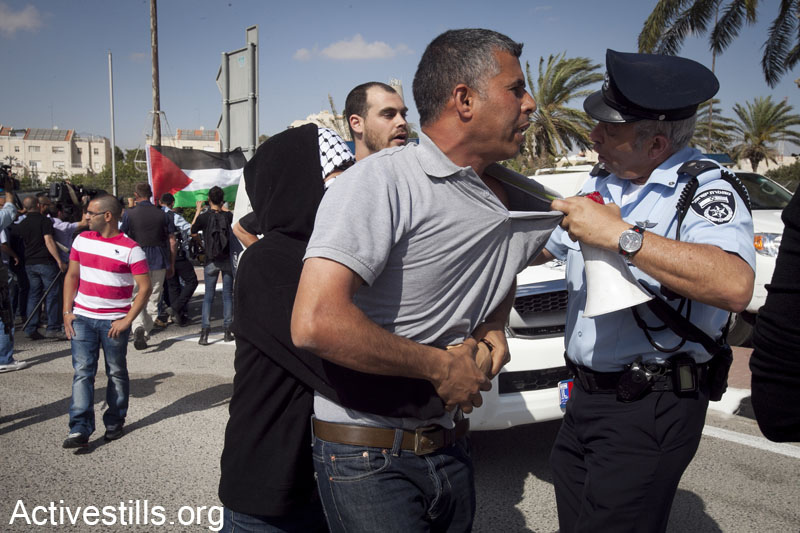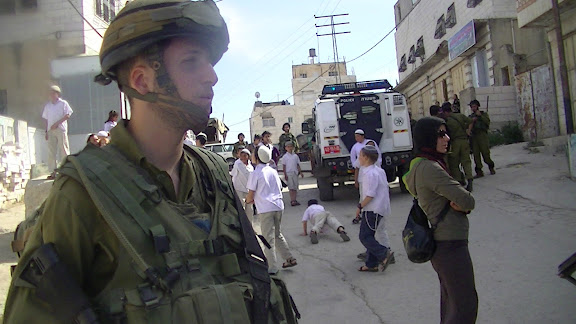Tag: Settlers
-
Settler Attack: Palestinian man shot in head in Asira al-Qibliya
By Maria Erdely 20 May 2012 | International Solidarity Movement, West Bank Asira al-Qibliya, a village located south-west of Nablus, was attacked by illegal Israeli settlers yesterday. The attack lasted all afternoon leaving 7 Palestinians injured, of which 5 required hospitalization. Settlers fired live ammunition at the Palestinians, and one man was in critical condition…
-
Activists seal off settlement in solidarity with hunger strikers
13 May 2012 | Popular Struggle Coordination Committee Protesters blocked the entrance to the Ma’ale Adumim settlement, meters away from one of Israel’s main interrogation centers in the West Bank. Two protesters were arrested. 50 Palestinian, Israeli and international activists blocked the entrance of the Ma’ale Adumim settlement today, in support of the Palestinian prisoners’…
-
Tel Rumeida: Child settler violence through the lenses of an international activist
by Sunny 5 May 2012 | International Solidarity Movement, West Bank A group of approximately 10 to 15 soldiers displayed their ineptitude in dealing with a group of rowdy settler children, roughly between the ages of 8 to 14, who were attemptng to enter Tel Rumeida. It was an embarrassing episode for the Israeli occupation…


